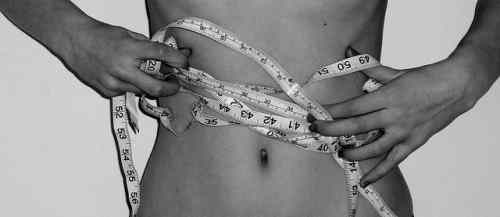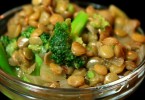“My doctor told me to stop having intimate dinners for four. Unless there are three other people.” Orson Welles.
“The second day of a diet is always easier than the first. By the second day you’re off it.” Jackie Gleason.
“I refuse to spend my life worrying about what I eat. There is no pleasure worth forgoing just for an extra three years in the geriatric ward.” John Mortimer.
Like Messrs Welles, Gleason and Mortimer, I love food and abhor dieting! And it shows! Oh! Only if I could be thin without letting go of the delectable foods that I love so much!
But on a more serious note, keeping your weight under control is a must for a longer, healthier and more confident life. And for getting people of the opposite sex attracted to you! Someone said ‘There are six components of wellness: proper weight and diet, proper exercise, breaking the smoking habit, control of alcohol, stress management and periodic exams’ and that makes a lot of sense. However, despite my best efforts, I find it extremely difficult to keep my weight under control.
I have tried a number of diets. I have lost a lot of weight following some of them; they do work. Sadly, I have regained my weight each time, mainly because I gave up the diets after a few months and went back to my old way of eating. Before I discuss the various diets that you could consider, the first important lesson for successful dieting, therefore, is – stay with it, make it a lifetime habit. Because if you don’t, you will gain back all that you have lost.
A diet is a prescribed selection of foods that one eats in order to build the right body type. There are numerous diet programmes that people follow to lose weight, gain weight, tone muscles, lower cholesterol or simply lead a balanced lifestyle. How do you know which diet programme is the right one for you? Essentially, there are two types of diets – low-carb and low-fat – and a number of them in between. I am outlining some of the more popular diet programmes that are essentially meant of weight loss – read more about the one that you find the most appropriate before starting on it.
A. Low carbohydrate diets
Low carbohydrate diets are not new. In 1797, John Rollo treated two diabetic Army officers with a low-carbohydrate diet and medications. Low-carb diets became very popular in the 19th century for the treatment of diabetes. In 1863, William Banting, an English undertaker and coffin maker lost weight following a low-carb diet and published “Letter on Corpulence Addressed to the Public”, in which he recommended a diet for weight control by giving up bread, butter, milk, sugar, beer and potatoes. The pamphlet became so popular that ‘Banting’ became synonymous with ‘dieting.’
The 20th century saw a few other people introducing their versions of the low-carb diet. But it was in 1972 when Dr. Robert Atkins introduced his diet in the book ‘Dr. Atkins’ Diet Revolution’ that the low-carb diet started getting noticed in the States. His revised book, ‘Dr. Atkins’ New Diet Revolution’, published in 2002, started a craze for low-carb diets. Many Hollywood film stars lost or maintained their weight following the Atkins Diet.
Today, the popular low-carb diets include the Atkins Diet, the Dukan Diet, Protein Power, the Zone and the Paleo Diet, amongst others. Since these diets, despite having their differences, are essentially low-carb diets, I will cover only the Atkins Diet here.
Atkins Diet – The Atkins Diet is the first really popular low-carb diet. It involves the consumption of low levels of carbohydrates; this results in the body burning fat to release energy. In the absence of the carbohydrates, the fats become the sole energy source, leading to a loss in weight. The process by which the body burns fat for energy is called ‘ketosis.’
The Atkins Diet is divided into four phases – Induction, Ongoing Weight Loss (OWL), Pre-maintenance and Lifetime Maintenance. The Induction phase is a ketogenic diet phase where, for two weeks, you have to give up virtually all carbohydrates; you are only allowed to eat 20 grams of net carbohydrates per day, mainly in the form of salads and vegetables (called the foundation vegetables). Of course, you can eat good quantities of meat and fish, hard cheese and cream. Fats are allowed on Atkins. You are likely to lose quite a lot of weight during the induction phase – I have lost almost 4 kilograms once.
In the OWL phase, you can add some more carbs into your diet, 5 grams at a time. Ideally, the additional carbs, apart from the foundation vegetables mentioned above, should be in the form of nuts and seeds. In this phase, you will continue to lose weight.
The Pre-maintenance phase allows even more carbs to be added to your diet, based on the priority list that Atkins recommends. The pre-maintenance diet should be started when you have just about 4-6 kilograms more to lose to reach your target weight.
The Lifetime Maintenance phase begins when you have reached your target weight. In this phase, you add more carbs to your diet, but just that much that will allow you to maintain your weight.
I would recommend that you read more about the Atkins Diet before starting it. After Atkins’ unfortunate death, two books have been published by others on the Atkins Diet – The New Atkins for a New You and the New Atkins Made Easy – and you could purchase one of these. Of course, you won’t go wrong if you were to purchase Dr. Atkins’ New Diet Revolution.
The Atkins Diet works; I have lost weight on it quite a few times; it is a different matter that I regained my weight when I stopped! Since the Atkins Diet is a high protein, high fat diet, it has been criticised as being unhealthy. However, in recent times, many studies have shown that the problems associated with the Atkins Diet are exaggerated and that it could just be the ideal diet for us. I would still recommend that you check out the pros and cons of the diet, including checking with your physician, before starting on it.
B. Low-fat Diets
A low-fat diet restricts fat in your diet. Low-fat diets are intended to reduce diseases such as heart disease and obesity. Reducing fat in the diet can make it easier to cut calories. Fat provides nine calories per gram while carbohydrates and protein each provide four calories per gram, so choosing low-fat foods makes it possible to eat a larger volume of food for the same number of calories. Low-fats diets lead to an increase in the consumption of carbs.
The popular low-fat diets include the Pritikin Diet, the Ornish Diet, DASH and the Vegetarian Diet. While the Pritikin Diet and DASH allow one to have a bit of fish, chicken and meats, the Ornish Diet is a stricter, vegetarian diet, virtually banning the consumption of non-vegetarian foods (although it does allow low consumption of egg whites and fish). For many Indians who are pure vegetarians, the Ornish Diet may just prove to be the most suitable diet.
In the Ornish diet, you should aim to get your daily calories in the following way: around 10% from fats, around 20% from proteins and the balance from carbohydrates. Thus, it allows for a person to have large quantities of vegetables and whole grains, fruits and legumes.
Dr. Dean Ornish is a celebrity doctor in the US and maintains that the strictest form of his diet can even reverse heart disease. Again, before starting on any of the low-fat diets, including the Ornish Diet, do read about them and consult a doctor.
C. GI Diets
Low -glycemic diets are diets that help you to lose weight by controlling blood sugar. They recommend the consumption of foods that have a low glycemic index.
According to Wikipedia ‘the glycemic index (GI) is a measure of how quickly blood glucose levels (i.e., blood sugar) rise after eating a particular type of food. Glucose (the defining standard) has a glycemic index of 100. The effects that different foods have on blood glucose levels vary considerably. The glycemic index estimates how much each gram of available carbohydrate (total carbohydrate minus fiber) in a food raises a person’s blood glucose level following consumption of the food, relative to consumption of pure glucose.’ Non-vegetarian foods do not qualify since they don’t have any carbs (thus, no sugars). Vegetables of various kinds have a low glycemic index although potatoes and other pulpy vegetables do have a higher glycemic index. Fruits of the berry variety have a lower GI as compared to pulpy fruits like mangoes. Whole grains and legumes have a lower GI than refined carbs. You can get the GI table from many sites on the web.
One example of a low-glycemic diet is the Glycemic Index Diet developed by David J. Jenkins, a professor of nutrition at the University of Toronto and later turned into a successful line of diet books by author and former president of the Heart and Stroke Foundation of Ontario, Rick Gallop. The South Beach Diet, that was very popular a few years ago is, to my mind, closer to a low-carb diet (its induction phase is a carbon copy of the Atkins’ induction phase); however, it recommends the consumption of good carbs (carbs with a lower GI) in limited quantities and in that respect, it is closer to the Glycemic Index Diet. The same goes for the Mediterranean Diet.
Of course, there are millions of other diets that exist; I just cannot cover them all. However, they lie in the spectrum of low-carb and low-fat diets. Many of them are fad diets so you must beware of them. A lot of dieticians and doctors will say the same old thing – eat a balanced diet but eat in moderation. Frankly, from my experience and from the experiences of many plumb friends of mine, that’s easier said than done! To lose weight, one will have to choose a diet plan, almost all of which restrict some food groups.
Hope to see a thinner, healthier you next time!
Visual Courtesy:https://www.flickr.com/photos/charlottedownie/







